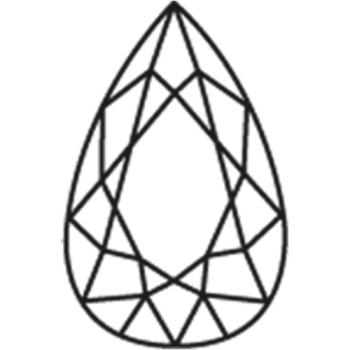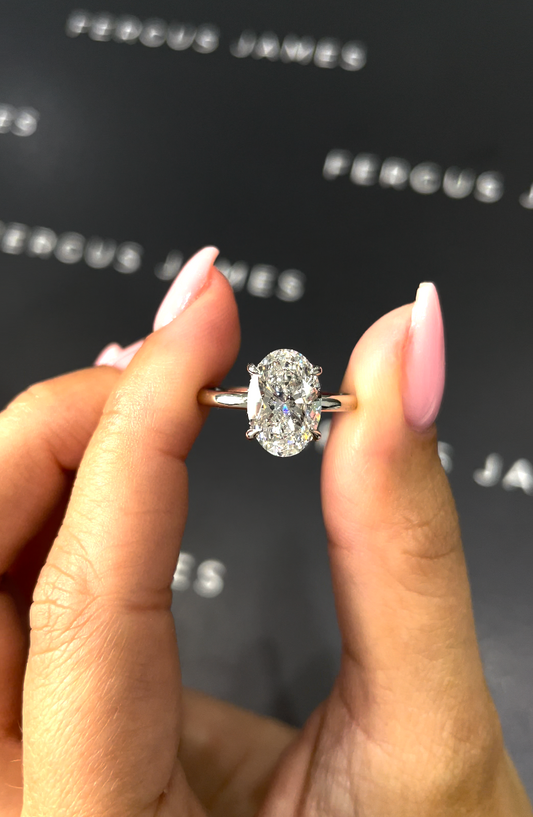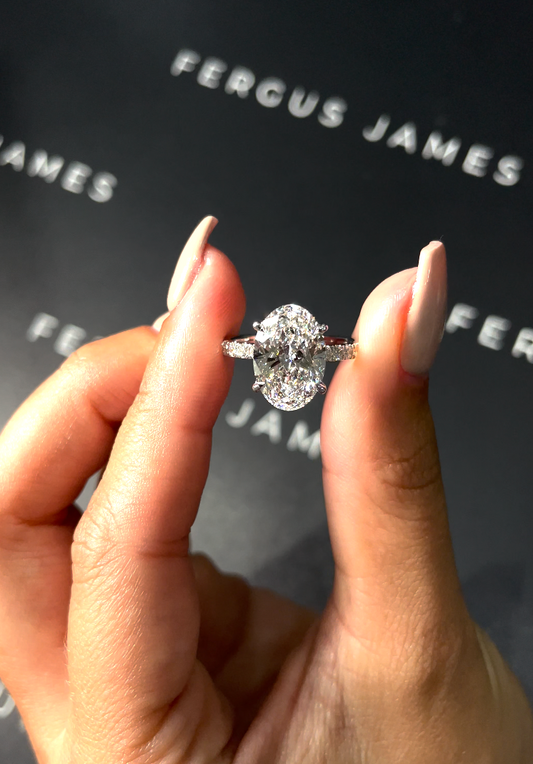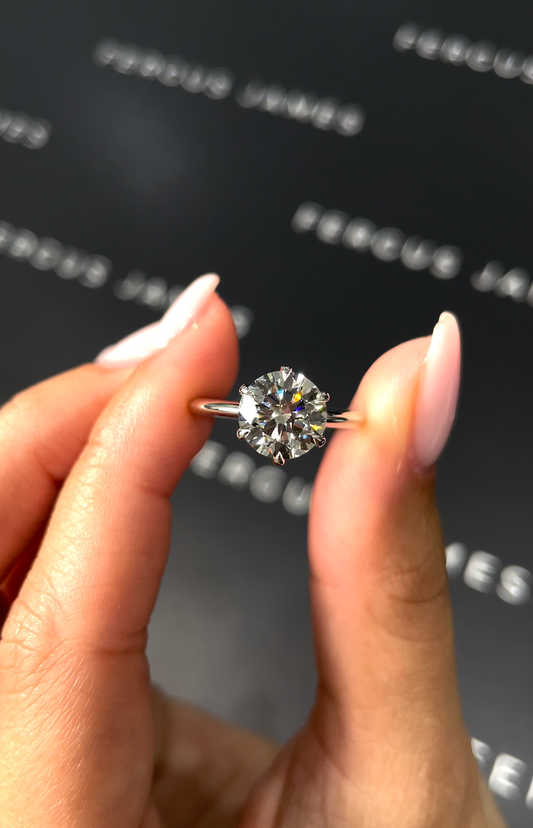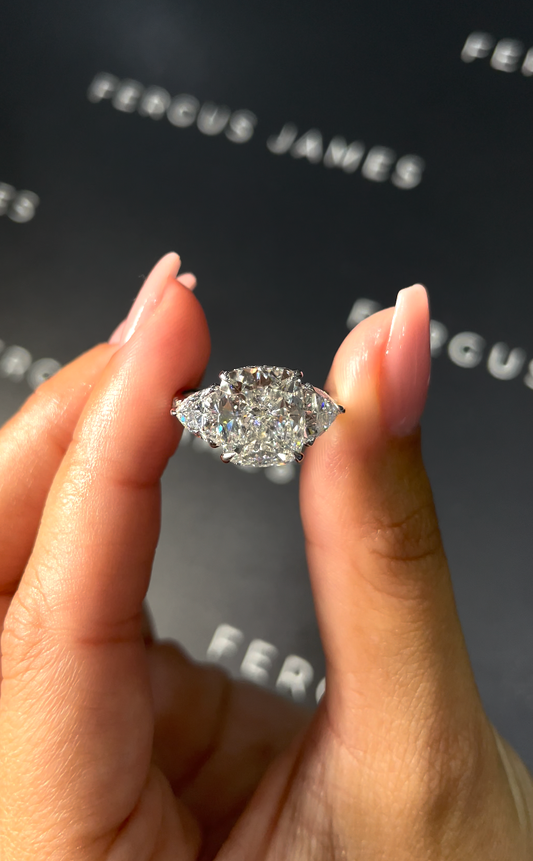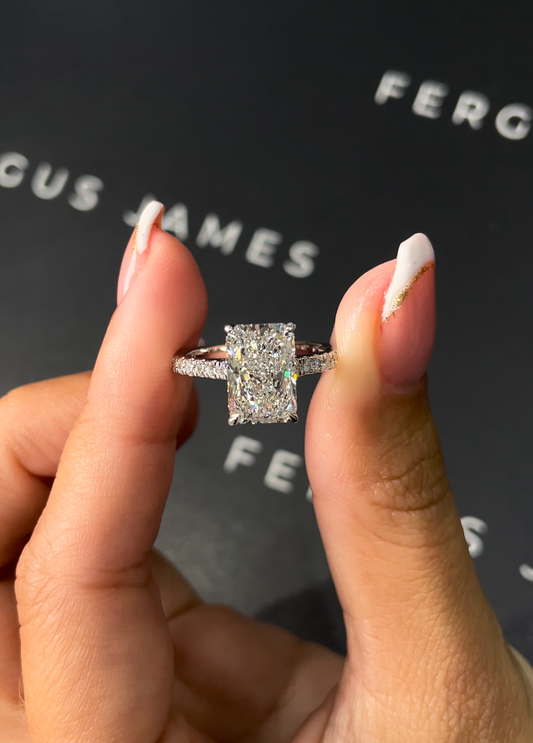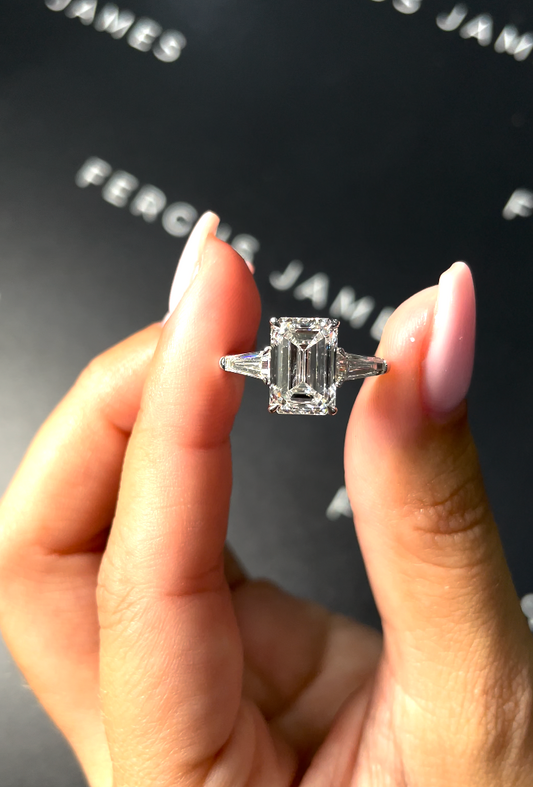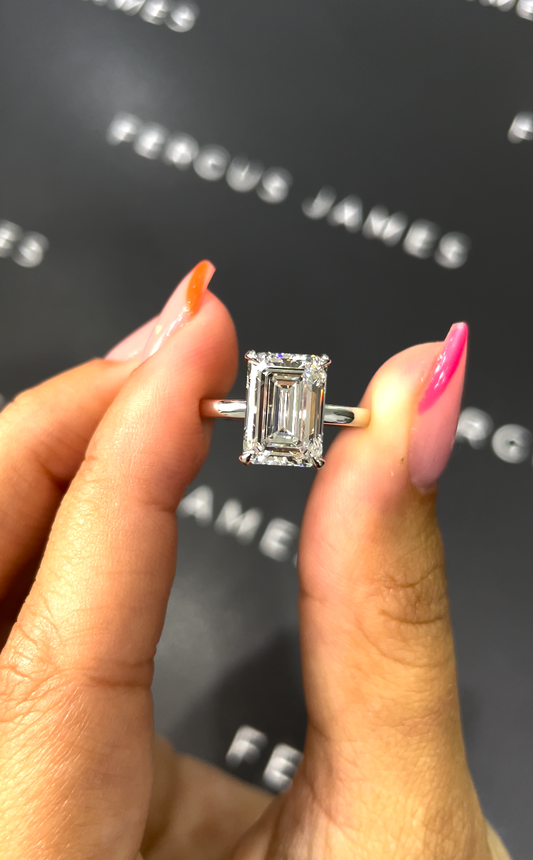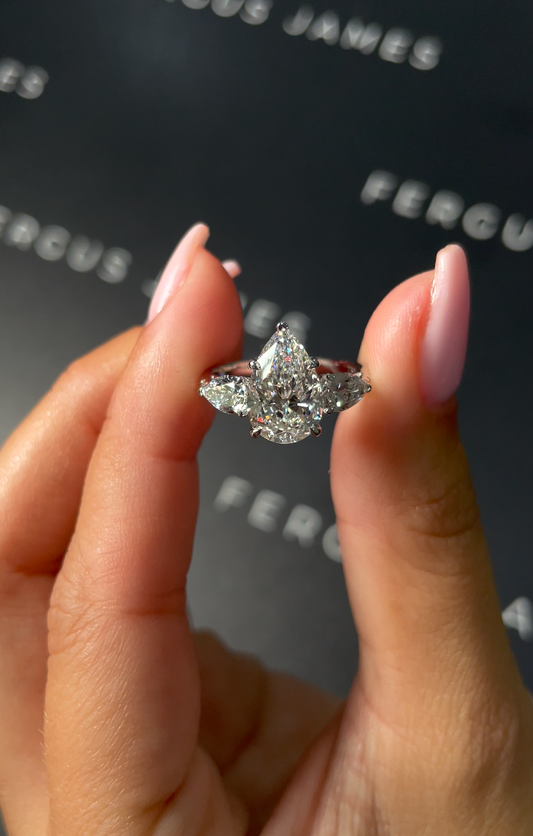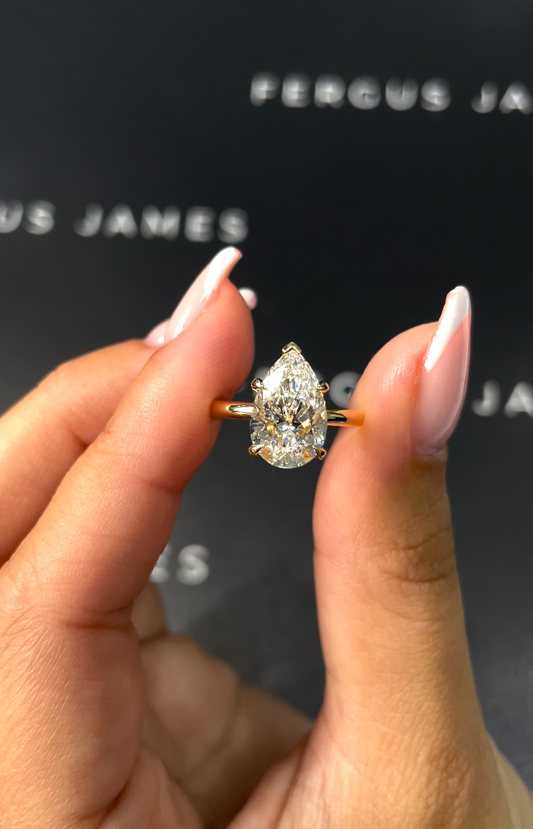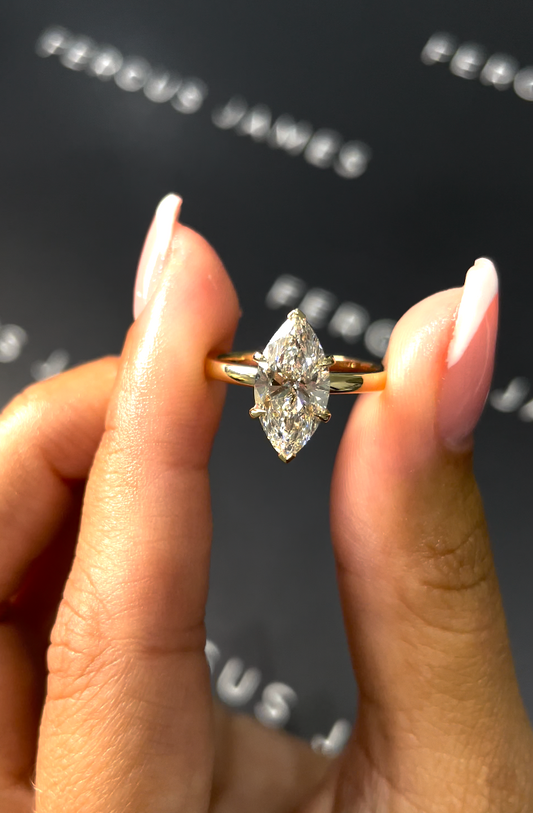What to Know Before You Buy a Lab-Grown Diamond in 2026
Lab-grown diamonds have become one of the most talked-about choices in fine jewelry. With more people looking for sustainable and affordable alternatives, these stones are now a major part of the engagement ring market. But before you decide to buy one in 2026, it’s worth understanding what you’re really getting, how to evaluate quality, and what trends to expect this year.
At Fergus James Jewellery in Dubai, we work with both mined and lab-grown diamonds, and we’ve seen how much interest and curiosity there is around this topic. Here’s everything you should know before making your purchase.


1. What Is a Lab-Grown Diamond?
A lab-grown diamond is a real diamond. It has the same crystal structure, chemical composition, and physical properties as a mined diamond — the only difference is how it’s created. Instead of forming naturally underground over millions of years, it’s made in a high-tech laboratory using advanced technology that replicates the natural growth process.
There are two main methods used:
• HPHT (High Pressure High Temperature), which mimics the natural conditions deep within the Earth.
• CVD (Chemical Vapor Deposition), which grows the diamond layer by layer using carbon gas.
Both methods result in a diamond that looks identical to one mined from the Earth. The sparkle, hardness, and brilliance are exactly the same — it’s still a 10 on the Mohs hardness scale, the hardest material known to man.
2. The Four Cs Still Apply
When you buy a lab-grown diamond, you’ll still be assessing the Four Cs: cut, color, clarity, and carat weight. These determine the stone’s quality, beauty, and price.
Cut: The cut affects how light interacts with the diamond, which determines its sparkle. Even with lab-grown diamonds, a poor cut can make the stone appear dull.
Color: Lab-grown diamonds are available in a wide range of color grades. Colorless diamonds (graded D–F) appear icy white, while near-colorless stones (G–J) offer better value.
Clarity: Because lab conditions are controlled, these diamonds often have fewer inclusions. Still, clarity grades range from flawless (no inclusions) to those with small internal marks visible under magnification.
Carat: Lab-grown diamonds allow you to get a larger size for your budget, but balance size with cut quality — a smaller, well-cut diamond will sparkle more than a larger, poorly cut one.
At Fergus James, we recommend viewing diamonds under natural and studio lighting before you decide, so you can truly see how they perform in real life.
3. Always Ask for Certification
A certified diamond gives you proof of what you’re buying. Whether natural or lab-grown, a reliable grading report from an independent gemological laboratory is essential.
When buying, make sure that:
• The certificate clearly states that it’s a lab-grown diamond.
• The grading report includes detailed assessments for cut, color, clarity, and carat.
• The diamond’s girdle is laser-inscribed with its report number, which helps you verify authenticity.
A certificate gives you confidence and ensures you’re getting the quality you’re paying for. Fergus James only sources lab-grown diamonds that are certified and fully traceable.
4. Pricing and Value in 2026
One of the main attractions of lab-grown diamonds is price. In 2026, a high-quality lab-grown diamond typically costs 60–80% less than a mined diamond of similar specifications. That difference means you can often afford a larger or higher-quality stone for the same budget.
However, it’s important to understand that lab-grown diamonds don’t hold the same resale value as mined ones. Their prices have dropped in recent years due to increased supply and improved production technology. If you’re buying a diamond primarily for its beauty and symbolism rather than as an investment, a lab-grown diamond is an excellent choice.
If long-term value retention is your main concern, you may want to compare both options before deciding.
5. Ethical and Environmental Benefits
Many clients choose lab-grown diamonds for their ethical and environmental advantages. These stones do not involve large-scale mining, which can disturb ecosystems and affect local communities.
However, “lab-grown” does not always mean “completely sustainable.” Some production facilities use large amounts of energy. If environmental impact is important to you, ask where and how the diamond was produced. Leading labs now use renewable energy sources and carbon-neutral methods, so choosing those can align with your sustainability goals.
At Fergus James, we prioritise suppliers that are transparent about their energy use and production process, giving our clients confidence that their diamond is responsibly made.
6. Trends to Watch in 2026
Lab-grown diamonds continue to gain popularity worldwide, and several trends are shaping how people buy and wear them this year:
• Larger stones: With lower prices, couples are choosing bigger center stones — often 2 carats or more — without exceeding their budgets.
• Fancy shapes: Ovals, cushions, emerald cuts, and elongated radiant cuts are trending over traditional round brilliants.
• Bespoke settings: More clients are putting savings from the diamond toward custom-made settings that reflect their personal style.
• Mixed-metal designs: Yellow gold and platinum combinations are in demand, adding a modern twist to timeless designs.
• Ethical luxury: Clients appreciate that they can have a beautiful diamond ring without the ethical concerns of traditional mining.
In Dubai, we’ve noticed that clients appreciate the value and freedom lab-grown diamonds offer — it allows them to focus on design and craftsmanship rather than just carat weight.

7. Questions to Ask Your Jeweller
Before buying a lab-grown diamond, make sure you ask your jeweller the right questions:
- Is the diamond certified, and can I see the certificate?
- Which method (HPHT or CVD) was used to grow it?
- Has the diamond been treated or enhanced in any way?
- What metal is used for the setting, and is it suitable for daily wear?
- Can the jeweller customise or upgrade the ring in the future?
At Fergus James, we encourage clients to ask as many questions as they like — transparency is key to finding a ring you’ll cherish for years.
8. Caring for a Lab-Grown Diamond
Caring for your diamond is straightforward. Clean it with mild soap, warm water, and a soft brush. Avoid harsh chemicals like bleach, which can damage the setting. Have your ring inspected once a year to make sure the prongs are secure. When not wearing it, store the ring in a separate box or pouch to prevent scratching.
With proper care, a lab-grown diamond will stay brilliant for a lifetime — just like a mined one.
9. Why Lab-Grown Diamonds Work So Well for Custom Rings
Because lab-grown diamonds are more affordable, they give you greater freedom to design a truly unique piece. Many clients use that flexibility to create bespoke engagement rings that express their individuality.
You might prefer a modern solitaire with a hidden halo, a vintage-inspired design with milgrain details, or a bold statement ring with mixed metals. With a lab-grown diamond, you can achieve your dream design without compromise. At Fergus James, our team works closely with each client to balance design, comfort, and brilliance, ensuring the final piece feels personal and meaningful.
10. How to Decide if It’s the Right Choice
Here are a few points to think about when deciding whether a lab-grown diamond is right for you:
• You want a high-quality diamond with great sparkle at a lower price.
• You care about ethical sourcing and want to reduce environmental impact.
• You value design and craftsmanship more than long-term resale potential.
• You’d like flexibility in size, shape, and setting without overspending.
If these align with your priorities, a lab-grown diamond could be the perfect choice for your engagement ring or fine jewelry piece.
Final Thoughts
Buying a lab-grown diamond in 2026 is about making an informed, confident decision that matches your values and lifestyle. These diamonds are real, beautiful, and far more accessible than ever before. They allow you to express personal style and commitment without compromise.
At Fergus James Jewellery, we believe your diamond should reflect your story — whether it’s lab-grown or mined. Our goal is to give you clear guidance, complete transparency, and an unforgettable design experience from start to finish.
Visit our Dubai showroom or reach out to our team to explore certified lab-grown diamonds in every cut, color, and setting style. We’ll help you find a ring that shines as brightly as your love.




